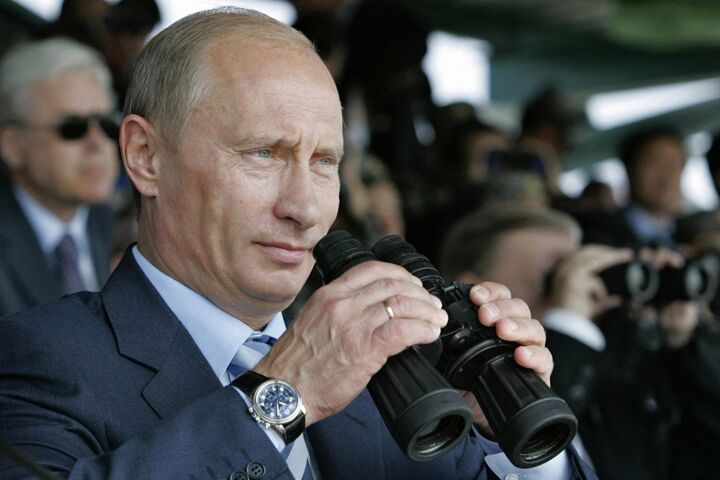
Russian Nuclear Bombers Resume Cold War-Style Missions
Thirty-nine years ago Monday, Soviet forces invaded Czechoslovakia. On Friday, Russian President Vladimir Putin announced that the Russian Air Force would resume Cold War-style nuclear bomber flights into international airspace.
“Our pilots have been sitting on the ground for too long,” announced Putin. “From this day on, the duty of this kind, the combat duty, will be held on a regular basis.”
Nearly 16 years after the collapse of the Soviet empire, Russia is broadcasting its resurgent military might to the world.
On Friday, 14 Russian nuclear-capable strategic bombers took to the air from seven airfields across Russia for sorties over the Atlantic, Pacific and Arctic oceans. In a scene reminiscent of Cold War tensions, nato fighter jets scrambled to shadow the Russian aircraft, according to Moscow.
In July, the British Royal Air Force launched fighters to protect its airspace as Russian bombers flew toward Scotland but reversed course before entering UK airspace.
In early August, Russian bombers also incited a jittery incident near Guam as they flew on an intercept course toward the U.S. military base in the Pacific. Russian Gen. Pavel Androsov, the commander of long-range aviation, boasted that the Russian maneuvers prompted the Americans to scramble fighter jets that flew so close to the Russians that the pilots “smiled at each other” before going their separate ways. U.S. officials confirmed the Russian flight, but said no U.S. jets were scrambled.
“The message to the West is clear: The days of dismissing Russia as a spent force are over,” the Washington Times said.
A re-energized and oil-rich Russia is drastically upping its military expenditures. Russia plans to increase combat aircraft production 100 percent by 2025. Plans for submarine-launched nuclear ballistic missiles with a 5,000-mile range and carrying up to 10 warheads each are also in the works, along with new, advanced anti-aircraft missiles and missile defense launchers.
Jane’s Sentinel Country Risk Assessments notes that Russia also plans to invest significantly in its new tu-160 strategic bomber, the su-34 “Fullback” fighter-bomber, and a new fifth-generation fighter, the Sukhoi T-50, which will enter service next year.
Russia’s naval capability will also enjoy a massive upgrade. Russia’s carrier fleet is expanding to include six brand-new, nuclear-powered aircraft carriers, up from only one currently in service. Russia is also adding eight new ballistic missile submarines.
Putin “believes in fighting for your place in the sun and has said that nobody appreciates weakness,” says Alex Pravda, a Russian expert at London’s foreign-policy think tank Chatham House.
Russia’s newly aggressive posture will have huge implications for Europe. A disunited, bickering, fractured Europe did not have as much to worry about with Russia still smarting from its economic collapse a decade ago, but the economically robust and militarily resurgent Russia of today changes the geopolitical picture dramatically.
The EU comprises many former Soviet bloc nations, including the nations formerly comprising Czechoslovakia. Europe’s eastern expansion is something Russia desperately wants to stop.
Conversely, if motivation for further European integration were needed, Russia’s recent military exhibitions may be a potent unification catalyst. The European Union is set to get much tighter, and Russia much stronger.
